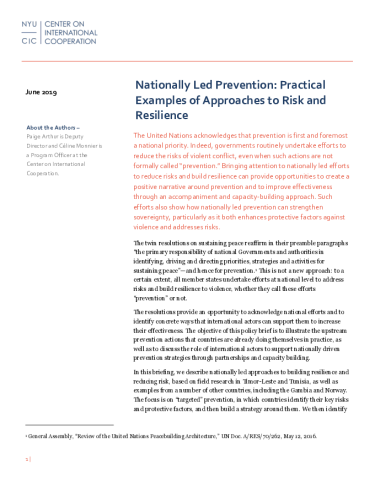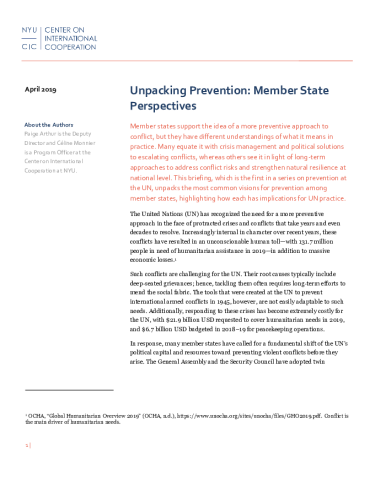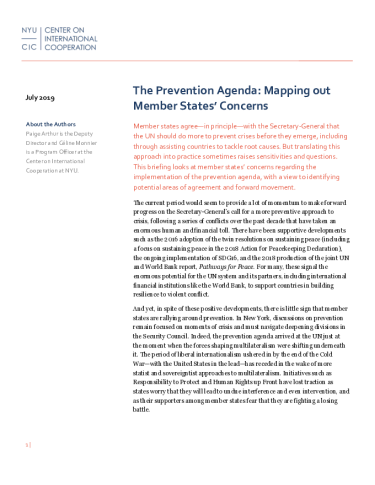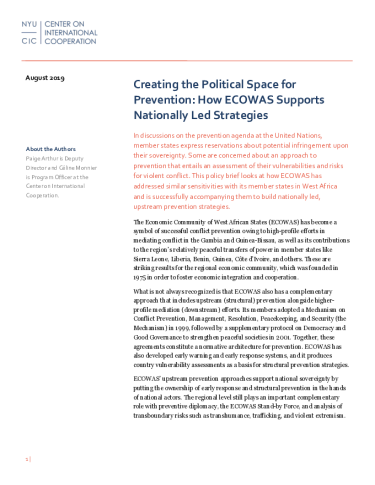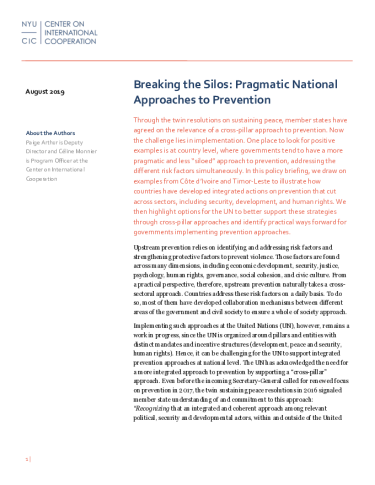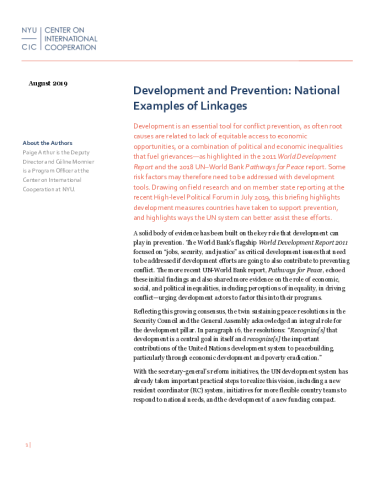The United Nations acknowledges that prevention is first and foremost a national priority. Indeed, governments routinely undertake efforts to reduce the risks of violent conflict, even when such actions are not formally called “prevention.” Bringing attention to nationally led efforts to reduce risks and build resilience can provide opportunities to create a positive narrative around prevention and to improve their effectiveness through an accompaniment and capacity-building approach. Such efforts also show how nationally led prevention can strengthen sovereignty, particularly as it both strengthens protective factors against violence and addresses risks.
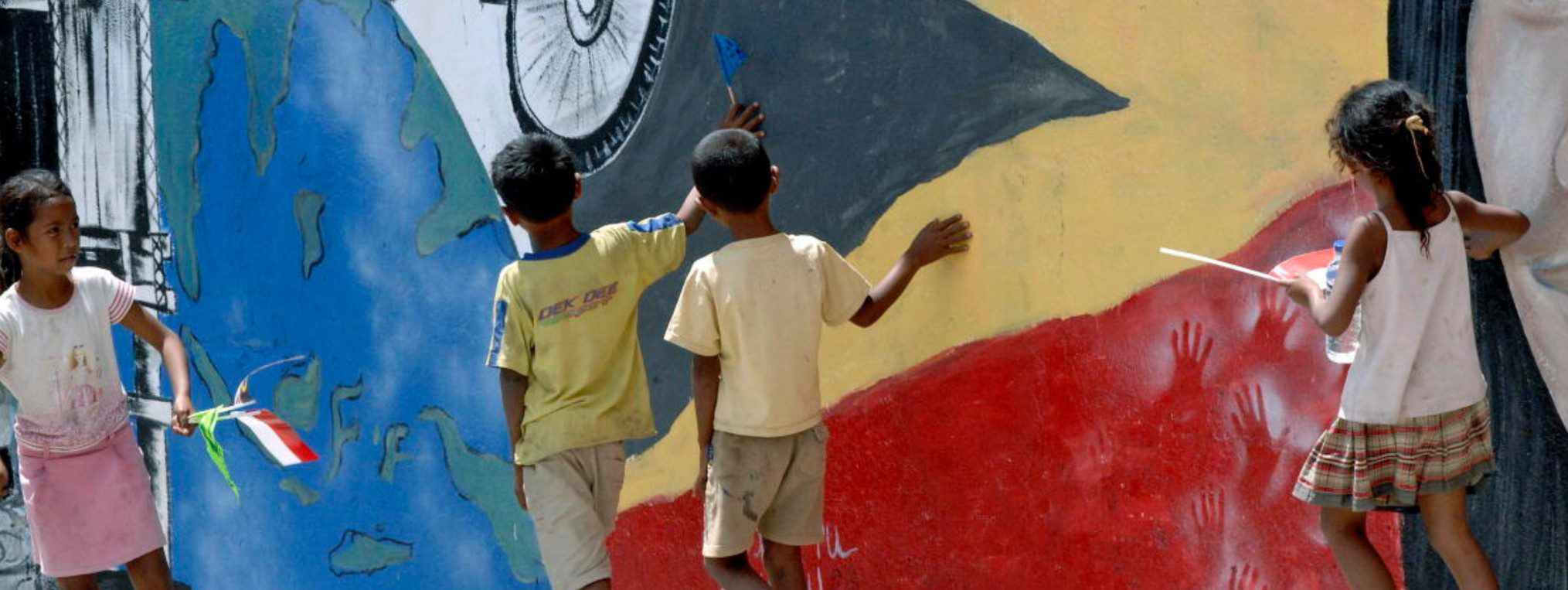
In this briefing, our second in a series on prevention at the UN, we describe nationally led approaches to building resilience and reducing risk, based on field research in Timor-Leste and Tunisia, as well as examples from a number of other countries, including the Gambia and Norway.
The focus is on “targeted” prevention, in which countries identify their key risks and protective factors, and then build a strategy around them. We then identify concrete opportunities for international accompaniment and support to these processes.
Read the full paper Nationally led Prevention: Practical Examples of Approaches to Risk and Resilience.pdf
More in the prevention series:
- Unpacking Prevention: Member State Perspectives (April 16, 2019)
- The Prevention Agenda: Mapping Out Member States’ Concerns (July 2, 2019)
- Creating the Political Space for Prevention: How ECOWAS Supports Nationally Led Strategies (August 29, 2019)
- Breaking the Siloes: Pragmatic National Approaches to Prevention (August 30, 2019)
- Development and Prevention: National Examples of Linkages (August 31, 2019)
